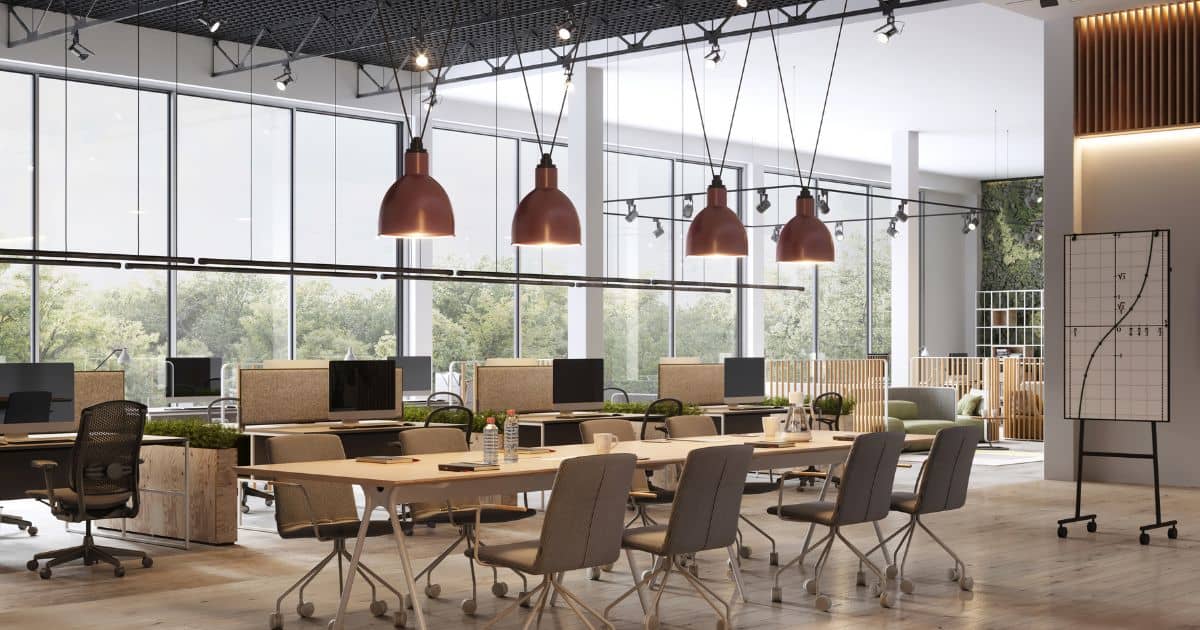Maximizing Natural Light in Office Interior Design: A Guide to Healthier, More Productive Workspaces

Ever considered how the quality of light impacts your well-being at work? Many office design enthusiasts often overlook natural light as an essential element in office interior design. As a matter of fact, natural light doesn’t just save energy but also boosts mood and productivity, truly making your workspace a joy to be in. So how can we harness this abundant, yet so overlooked, resource in office design? Let’s illuminate the topic and explore some smart and chic ways of incorporating natural light in your office space.
Unlocking the Benefits of Natural Light in Office Environments
Here is a done up of fascinating facts that underscore the importance and benefits of natural light in office environments:
- Fact 1: Studies revealed that over 40% of workplaces with ample natural light recorded a significant drop in absentee rates. Less indirect sunlight led to more team members showing up for work enthusiastically.
- Fact 2: Research indicates that natural light aids in reducing stress and enhancing wellbeing. This is due to our bodies being naturally attuned to the sun’s patterns. This connection, known as circadian rhythm, positively impacts cognitive functions, sleep patterns and mood modulation.
- Fact 3: Natural light in office spaces can contribute to improved productivity. A Cornell University study found that people working in offices with optimised natural light reported an 84% drop in symptoms of eyestrain, headaches and blurred vision symptoms, which can detract from productivity.
- Fact 4: Incorporating natural light into an office environment improves energy efficiency. It significantly lowers electricity costs by reducing the need for artificial lighting throughout the day. It’s not only friendly on your budget but also earth-friendly.
- Fact 5: Securing a bond with nature via natural light in the workspace boosts employee morale. This concept, known as Biophilia, is increasingly being recognised as a worthwhile asset in office interior design.
Therefore, deliberately integrating natural light into your office environment can create a healthier, more energetic, and efficient workspace.
Simple Strategies for Maximizing Natural Light in Your Workplace
You’re well aware of the inherent benefits that natural light can bring to an office environment. So, how can you maximise the use of this tool in your workplace? Here are some simple yet effective strategies to consider.
Strategic Use of Windows
Windows are your primary source of natural light. Ensure they are kept clean and unblocked to allow the maximum amount of light to enter. For larger windows or glass walls, consider adding sheer window treatments that diffuse light evenly throughout the space, instead of causing harsh, direct illumination.
Strategic Office Layout
Arrange your office furniture strategically. Place workstations near windows for direct access to natural light. Consider open-plan layouts that better distribute light across the room. Cubicles and high partitions might provide privacy, but they significantly block light.
Reflective Surfaces
Make use of surfaces that reflect light to increase the overall brightness of the room. Incorporate light-coloured and glossy finished furniture, walls, and floors. Mirrors and other shiny objects can also serve as excellent reflectors.
Monitor and Control Light Levels
Having the right balance is key. Too little natural light can result in a dim workspace, while too much can lead to glare and heat. Utilise solutions like adjustable window blinds and curtains to control light levels.
All these strategies are designed to create a brighter, more liveable workspace, enhance productivity, and promote wellbeing. Implementing them can help you make the best use of natural light in your office space.
Creating a Balance: How to Combine Artificial and Natural Light in the Office
The art of balancing artificial and natural light is not as tricky as it may seem – a blend of both is achievable for a healthier, more productive workspace. Achieving this harmonious equilibrium starts with understanding and analysing the natural light available. It’s about determining how this light interacts with your office at different times of the day and across diverse seasons.
Based on this understanding, you can then map out how to enhance, restrict or supplement natural light with artificial light sources. For example, during times when natural light isn’t readily available, such as early mornings, late evenings or overcast days, you can compensate with artificial lighting. Just ensure that the artificial light mimics the qualities of natural light as closely as possible, i.e., it’s glare-free, adjustable, and diffused evenly.
Implementing a layering approach to light, where you use a combination of ambient, task, and accent lighting, can also create balance and variety. Ambient is the overall light that fills a room, task lighting focuses on individual workspaces like desks, whilst accent lighting is used for highlighting features. This layered approach encourages eye movement, reduces fatigue, and increases the overall appeal of the workspace.
In essence, a well-thought-out use of artificial light can greatly complement natural light. It optimises visibility, enhances comfort, and contributes to a much more engaging and productive work environment.
Introduce Natural Lighting into your office makeover with SORDC today
In essence, natural light stands as an indispensable factor that significantly influences the office aesthetics, employee health, productivity, and overall business success. Don’t just dream about an office space that leverages natural light, make it a reality. Reach out to SORDC today. We specialise in office renovation and design, incorporating the advantages of natural light into an efficient and appealing workspace. Remember, a bright office is a healthy office. Make the first step towards a luminous transformation of your workplace by contacting SORDC now.
